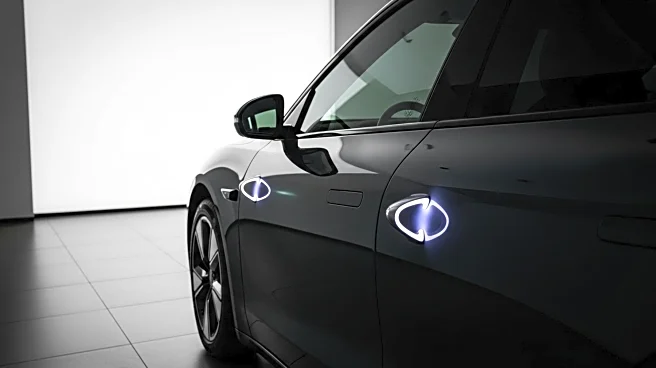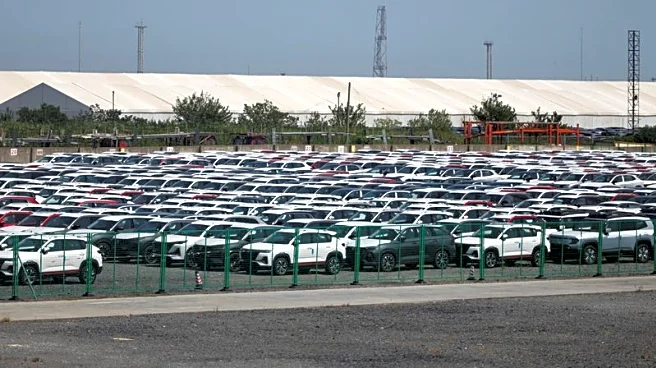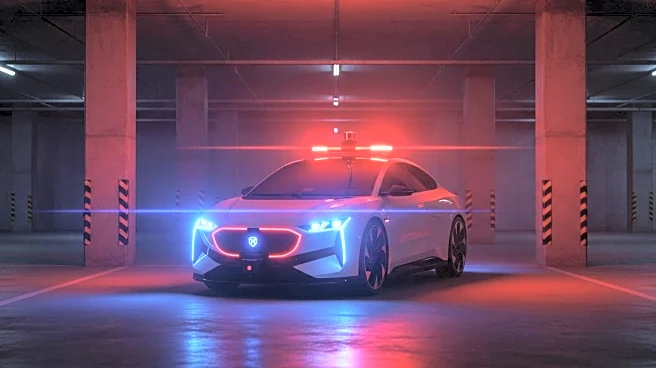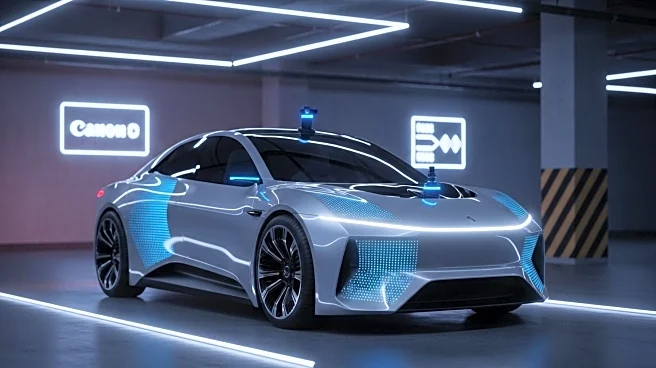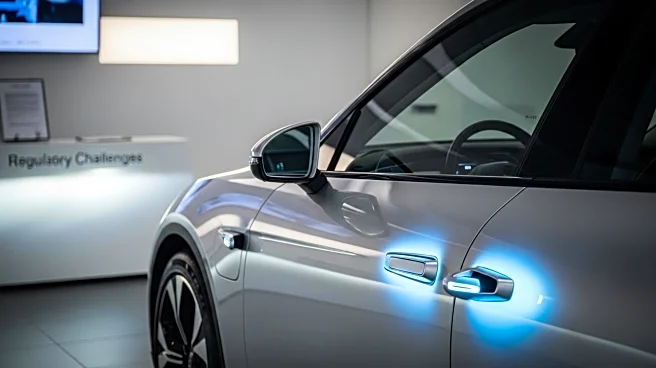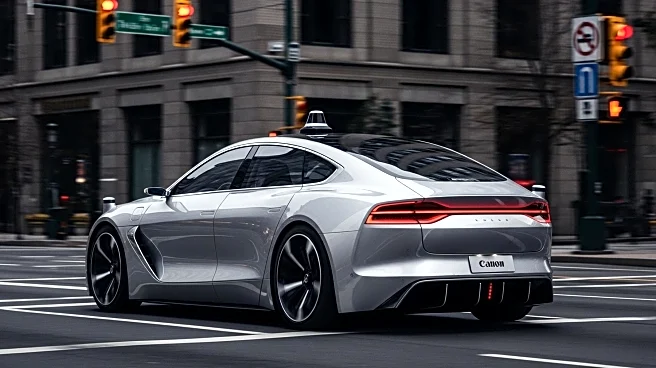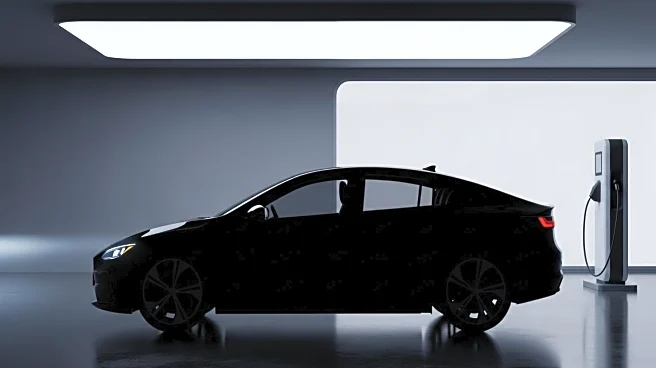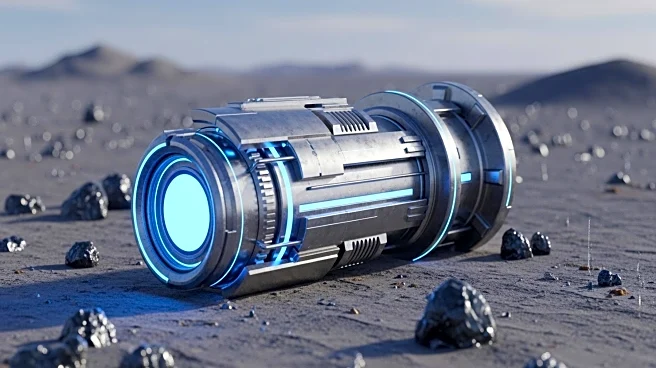What is the story about?
What's Happening?
Tesla is facing a significant challenge as new regulations proposed by China's Ministry of Industry and Information Technology could force the automaker to redesign its door handles. The regulations, set to be finalized after a comment period in late November, require mechanical release handles on both the inside and outside of every car, operable without tools after accidents. This move comes after the National Highway Traffic Safety Administration launched an investigation into the Tesla 2021 Model Y's door handles, following complaints from over 140 consumers. These complaints highlighted issues such as handles getting stuck or malfunctioning, particularly when the car's low-voltage batteries failed, leading to situations where occupants were trapped inside. Tesla has promised to redesign the handles, combining an internal mechanical release with its electronic one.
Why It's Important?
The proposed regulations in China, the world's largest automotive market, could have far-reaching implications for Tesla and other automakers. If implemented, these rules could influence global automotive design standards, given China's market size and influence. The requirement for mechanical release handles could increase production costs and complicate design processes, impacting Tesla's design-first approach. This situation underscores the importance of safety features in automotive design and the potential legal and financial repercussions for manufacturers if these features fail. The redesign challenge also highlights the complexities involved in balancing innovative design with practical safety requirements.
What's Next?
If the regulations are finalized, automakers, including Tesla, will need to adapt quickly, as the rules could take effect as early as mid-2027. This timeline poses a challenge given the multiyear vehicle design and development process. Automakers will need to navigate the 'real-estate problem' within car doors, balancing electronics, insulation, wiring, and other components while integrating new handle designs. The industry may see increased collaboration with supply chain experts to address these challenges efficiently. Additionally, Tesla's response to these regulations will be closely watched by industry stakeholders and consumers alike.
Beyond the Headlines
The situation raises broader questions about the role of regulatory bodies in shaping automotive design and the balance between innovation and safety. It also highlights the potential for international regulations to influence domestic policies, as U.S. regulators may consider similar measures. The legal implications for Tesla, particularly in light of lawsuits related to door handle failures, could lead to increased scrutiny and pressure to prioritize safety in future designs.
AI Generated Content
Do you find this article useful?
